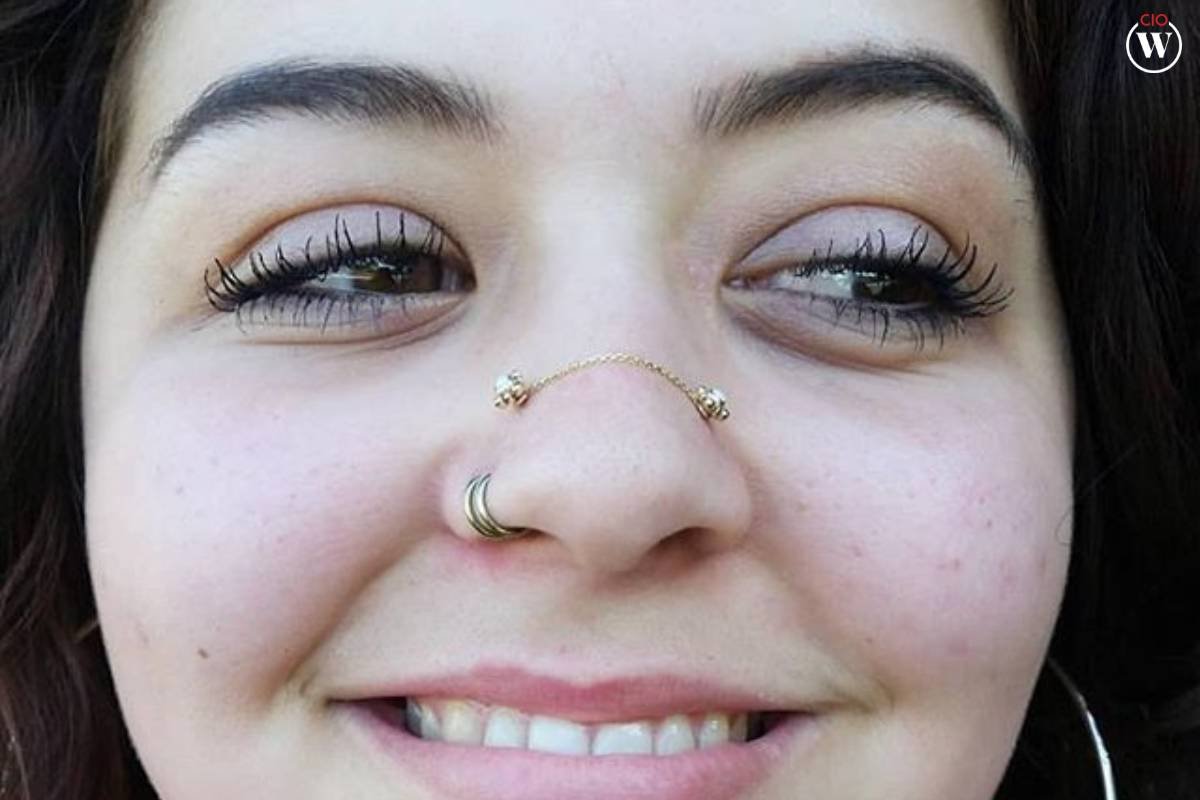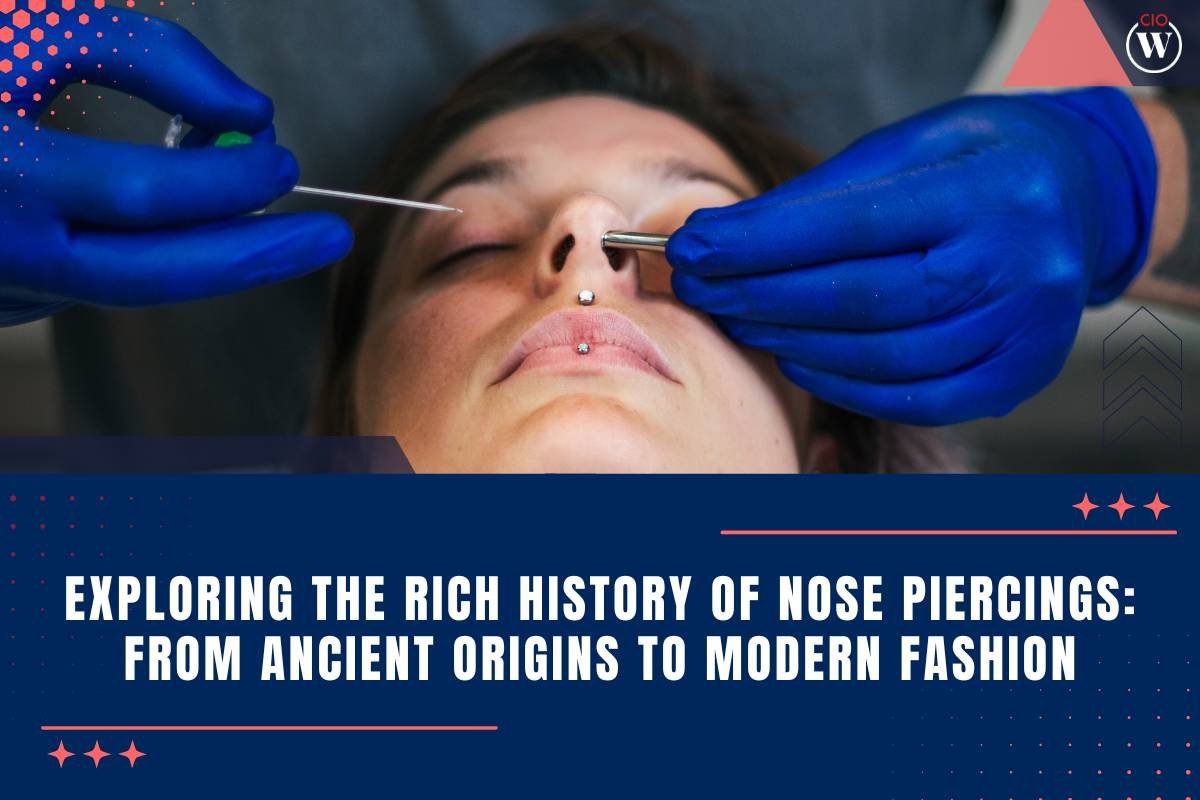In contemporary society, nose piercings are often perceived as a fashion statement or a form of self-expression. However, the roots of this practice run deep into the annals of history, spanning cultures and civilizations across the globe. From ancient rituals to modern trends, the history of nose piercings is a rich tapestry woven with cultural significance and personal adornment. Join us on a journey through time as we delve into the captivating history of nose piercings.
Ancient Origins: The Beginnings of a Tradition
The history of nose piercings dates back thousands of years, with evidence suggesting its existence in ancient civilizations such as the Indus Valley, Egypt, and the Middle East. In these cultures, nose piercings held deep symbolic meanings and were often associated with spirituality, social status, or rites of passage.
In ancient Egypt, nose piercings were primarily worn by the elite classes as a symbol of wealth and power. Both men and women adorned their noses with intricate gold rings, believing that they would enhance their beauty and protect them from evil spirits. Similarly, in the Indus Valley civilization, nose piercings were a common practice among women and were considered a symbol of marital status and fertility.
Cultural Significance: Nose Piercings Around the World
As trade routes expanded and civilizations interacted, the practice of nose piercing spread to various parts of the world, each culture imbuing it with its own unique significance. Each part of the world has a different history of nose piercings.
In South Asia, nose piercings became an integral part of traditional wedding rituals, symbolizing the bride’s purity, obedience, and readiness for marriage. In some communities, a bride’s nose was pierced on her wedding day, marking her transition into married life and symbolizing her commitment to her husband. Rich cultural tradition and dress can be wonderfully displayed when you capture the wedding footage after all is said and done.

In Africa, nose piercings were prevalent among certain tribal communities, where they held cultural and spiritual significance. Among the Berber and Beja tribes of North Africa, nose piercings were believed to enhance a person’s vision and ward off evil spirits. Similarly, in the Maasai and Fulani tribes of East and West Africa, nose piercings were a rite of passage for young girls, signifying their coming of age and readiness for marriage.
In the Americas, indigenous cultures such as the Aztecs, Mayans, and Incas practiced nose piercing as a form of body modification and adornment. Nose rings made of gold or jade were worn as symbols of wealth and status, and in some cases, as offerings to the gods during religious ceremonies.
Colonial Influence: Nose Piercings in the West
With the onset of colonialism and the spread of European influence, the practice of nose piercing faced persecution and suppression in many parts of the world. Western missionaries and colonizers viewed nose piercings as primitive or barbaric, seeking to eradicate indigenous traditions in favor of Eurocentric norms.
Despite these efforts, nose piercings persisted in certain cultures and gradually found their way into Western fashion and counterculture movements. In the 1960s and 70s, nose piercings experienced a resurgence in popularity among hippies and bohemians, who embraced them as a form of rebellion against mainstream society.
Modern Revival: Nose Piercings in the 21st Century
Now let’s get into the latest history of nose piercings. In recent years, nose piercings have become increasingly mainstream, shedding their associations with counterculture and rebellion to become a ubiquitous form of self-expression and personal style. From delicate studs to elaborate septum rings, there is a wide array of jewelry options available to suit every taste and aesthetic.

In addition to their aesthetic appeal, nose piercings continue to hold cultural and symbolic significance for many people around the world. In India, nose piercings are still an essential part of traditional wedding attire, while in the West, they are often seen as a symbol of individuality and empowerment.
Types of Nose Piercing Today
Nose piercings come in various styles, each offering a unique look and aesthetic appeal. Here are some of the most popular types of nose piercings:
1. Nostril Piercing:
Nostril piercings are perhaps the most common type of nose piercing. They involve piercing the nostril, either on the left or right side, with a small stud or ring. Nostril piercings can be placed either high or low on the nostril, depending on personal preference and anatomy. This type of piercing is versatile and can accommodate various styles of jewelry, including studs, hoops, and screws.
2. Septum Piercing:
Septum piercings involve piercing the thin strip of tissue between the nostrils, known as the septum. Septum piercings can be adorned with a variety of jewelry, including captive bead rings, circular barbells, and septum clickers. This type of piercing offers a bold and edgy look, and the jewelry can be easily flipped up for a more discreet appearance if desired.
3. Bridge Piercing:
Bridge piercings, also known as Erl piercings, involve piercing the bridge of the nose between the eyes. Bridge piercings are typically adorned with straight barbells or curved barbells, creating a unique and striking aesthetic. Due to the anatomy of the bridge area, bridge piercings require careful placement and may not be suitable for everyone.
4. High Nostril Piercing:

High nostril piercings are similar to standard nostril piercings but are placed higher up on the nostril. High nostril piercings offer a subtle yet stylish look and can be adorned with small studs or hoops. This type of piercing is ideal for those looking to add a touch of elegance to their nose jewelry.
5. Nasal Septum Piercing:
Nasal septum piercings involve piercing the septum vertically, from the inside of the nostril to the bottom of the septum. Nasal septum piercings can be adorned with circular barbells, captive bead rings, or horseshoe rings. This type of piercing offers a unique and unconventional look, and the jewelry can be customized to suit individual style preferences.
Conclusion: A Timeless Tradition
In conclusion, the history of nose piercings is a testament to the enduring human desire for self-expression, identity, and connection to our cultural heritage. From ancient rituals to modern trends, nose piercings have transcended time and geography to become a universal form of adornment and personal expression.
Whether worn as a symbol of cultural pride, a fashion statement, or simply as a way to express oneself, nose piercings continue to captivate and inspire people around the world. As we move forward into the future, let us celebrate the rich history of nose piercing and the cultural significance of this timeless tradition.









